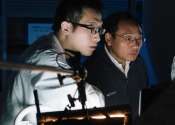Transforming space exploration
The University of Leicester is spearheading the development of new power generation technologies for space exploration as part of a European Space Agency funded programme.

The University of Leicester is spearheading the development of new power generation technologies for space exploration as part of a European Space Agency funded programme.
Space Exploration
Jul 2, 2018
0
21
New research from the Energy Department's National Renewable Energy Laboratory (NREL) quantifies the potential impacts of increasing wind and solar power generation on the operators of fossil-fueled power plants in the West. ...
Energy & Green Tech
Sep 24, 2013
0
0

Working with one of the world's preeminent thermoelectric materials researchers, a team of researchers in the Clemson Department of Physics and Astronomy and the Clemson Nanomaterials Institute (CNI) has developed a new, ...
Nanophysics
Jan 9, 2023
0
151

The intense interest in harvesting energy from heat sources has led to a renewed push to discover materials that can more efficiently convert heat into electricity. Some researchers are finding those gains by re-designing ...
Nanophysics
Apr 25, 2012
1
0

Researchers at the University of Hawaii at Manoa say that the Leeward side of Hawaiian Islands may be ideal for future ocean-based renewable energy plants that would use seawater from the oceans' depths to drive massive heat ...
Energy & Green Tech
Aug 3, 2010
1
0

(Phys.org) —Living without electricity in today's technological world may be difficult to imagine. Yet the reality of living without computers, mobile phones and entertainment systems, and managing a transport system thrown ...
Energy & Green Tech
Jan 28, 2014
2
0

Switching to renewables could cut the health impacts of air pollution from power generation as much as 80 percent by mid-century, experts said Tuesday.
Environment
Nov 19, 2019
0
2348

(Phys.org)—Americans used less energy in 2011 than in the previous year due mainly to a shift to higher-efficiency energy technologies in the transportation and residential sectors. Meanwhile, less coal was used but more ...
Energy & Green Tech
Oct 24, 2012
27
0

Almost 200 years after French physicist Jean Peltier discovered that electric current flowing through the junction of two different metals could be used to produce a heating or cooling effect, scientists continue to search ...
Materials Science
Dec 7, 2020
1
233
An unexpected source of new, clean energy has been found: the Plant-Microbial Fuel Cell that can generate electricity from the natural interaction between living plant roots and soil bacteria. The technique already works ...
Energy & Green Tech
Nov 23, 2012
5
0